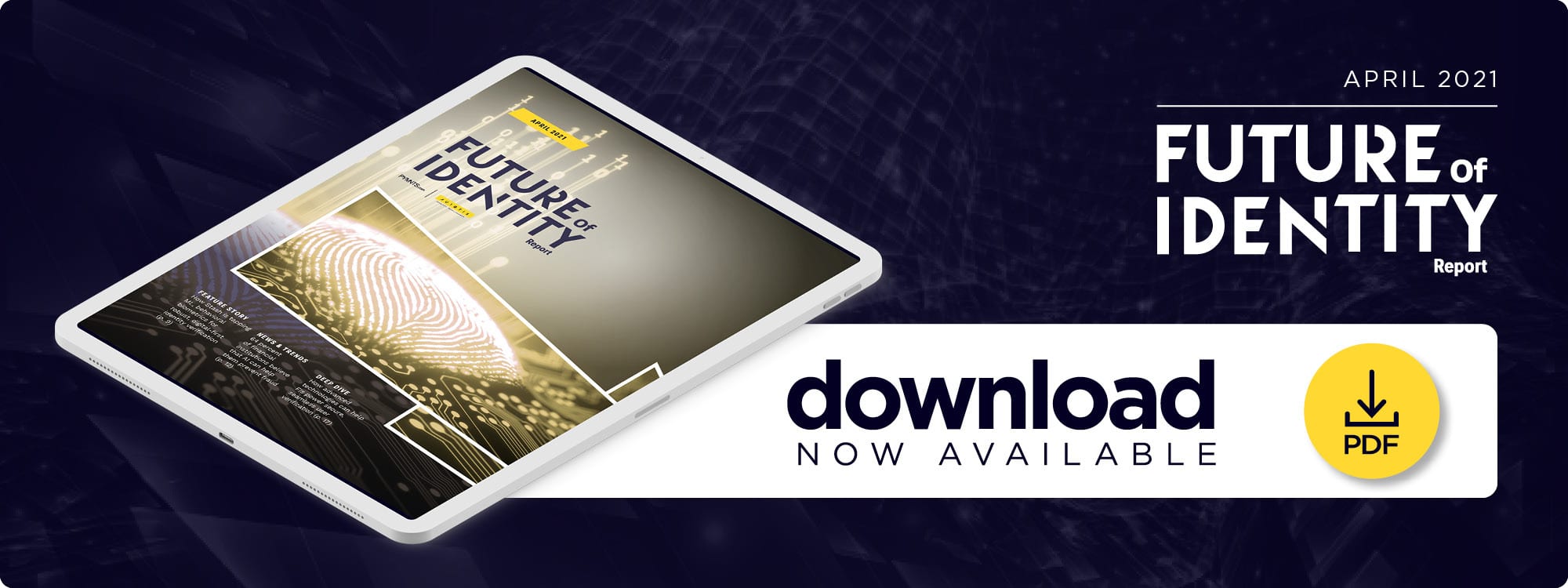How Stash Is Tapping Machine Learning, Behavioral Biometrics For Robust, Digital-First Identity Verification

Many younger consumers are accessing financial services for the first time, but this digital rush is creating new opportunities for fraudsters armed with synthetic identities to slip onto these platforms unnoticed. In the April Future of Identity Report, Caleb Callahan, vice president of fraud at personal finance app Stash, explains how machine learning and biometrics can create robust digital identity verification measures suited to the digital-first financial future.
Consumers have flocked to online investing platforms in the past year as the rise of “meme stocks” and increasing familiarity with digital banking tools prompt many to try investing on their smartphones for the first time. This growth represents a key opportunity for financial firms, but ensuring that consumers are who they say they are is more crucial than ever as fraudsters attempt to capitalize on this digital wave. Making this distinction requires ingenuity on the part of these firms, as usernames and passwords are problematic for user identification, according to Caleb Callahan, vice president of fraud at personal finance app Stash. The app provides investing, personal finance and educational tools and currently serves over 5 million customers.
“Just talking about the login process alone, as a fraud professional, I do not trust the username and password on its own,” Callahan told PYMNTS in a recent interview. “There are just too many consumers [who] reuse passwords [and] credentials and have had those appear in breaches. So [authenticating them] really is [about] trying to pull in aspects of the digital presence to confirm or contradict the identity itself as we have it. [Establishing] digital markers and tying those into the consumer record or identity record become critical to ensure that the consumer you are interacting with in the beginning is the identity record you think you are interacting with [throughout the verification process].”
Financial players thus need digital technologies that offer robust identity verification measures to keep fraudsters out while maintaining a seamless customer onboarding or login experience.
Meeting Digital Identity Challenges With ML
It can be difficult for platforms to verify new users’ identities when they lack any established behavioral patterns or purchasing decisions to indicate whether they are acting in sync with their past activities. This difficulty is only compounded when authenticating younger consumers or those who are beginning to build out financial portfolios, as such individuals simply do not have the credit histories or bank information to share with apps like Stash as first-time investors.
“A lot of our consumers coming on have very small financial footprints or are younger, and so traditional [methods] like credit-derived onboarding validation just do not cut it for them,” Callahan explained, noting that the average Stash customer is 30 years old with a median household income of about $50,000. “They do not have that financial history to validate against with the [credit] bureaus, and so [we are] really investing in a few different areas to help with this. [One way is by] adding in passive signals.”
This process involves collecting behavioral information about how the user is interacting with mobile phones or other connected devices when opening Stash, he continued. Using these and other behavioral biometrics enables the app to create more holistic identity profiles of the company’s customers. It is important to do this in a way that does not reduce the convenience of the onboarding or login process for these consumers, however. “High-friction” authentication steps that ask users to scan their licenses or provide other ID documents each time they access the platform may eventually frustrate customers, he said. The app also makes use of automated technologies such as machine learning (ML), which allows the company to look at all the interactions users have had in the past.
“[After] that first interaction of moving money onto the platform, as [consumers] mature … we are able to make decisions that are more based on how someone interacts with us and their history [rather] than just these kinds of probabilistic, ‘Does this look like other risks and fraud that we’ve seen in the past?’ [questions],” Callahan said. “We can start to allow consumers to do more and more on the platform based on that history and the patterns that they have established. Likewise, those patterns allow us to … validate against scenarios [in which] someone may gain access to someone else’s account through a compromised email address or something else.”
Callahan expects ML and other automated technologies to play a deeper role in identity verification processes over the next few years as the importance of robust digital identification rises and the information that defines consumers’ virtual identities continues to evolve.
ML’s Role In The Digital Identity Future
The financial industry has had more than a decade to ruminate on the future of digital identity as more consumers come to view online and mobile banking as primary ways of interacting with their financial institutions (FIs) or investment partners. Questions around digital identity’s future have only continued to swirl in recent years, Callahan explained, as multiple U.S. states begin supporting digital driver’s licenses or as elected officials such as Rep. Bill Foster propose federal bills for digital identity protections. The pandemic’s financial impact has placed the focus on this space, particularly for U.S. government entities racing to distribute stimulus or unemployment payments to waiting consumers — both of which have been targeted intensely by fraudsters.
“The state [governments] are now realizing they need to play catch-up to figure out how to better validate their own residents,” Callahan said. “There are also a lot of private institutions doing the same thing that are trying to work with state [governments] or create new solutions for distributed digital identities, and I am hoping … some of those start to take hold and become better solutions at scale. If a consumer could push a digital identity to us that we can trust through a third-party source, be it a state issuing a digital driver’s license or a private party, that solves a ton of what we are trying to make best-guess decisions about now based on the data available. This will help us shift away from the traditional data sources that do not meet the needs of underserved consumers in the financial space as well, like the overreliance on credit history.”
Financial players will need to be proactive in crafting identity verification measures to keep pace with the future of digital identity. Technologies like ML that can aggregate and automatically parse a growing number of virtual identity data points will likely continue to expand, making it incumbent on financial entities to give these tools careful consideration.

